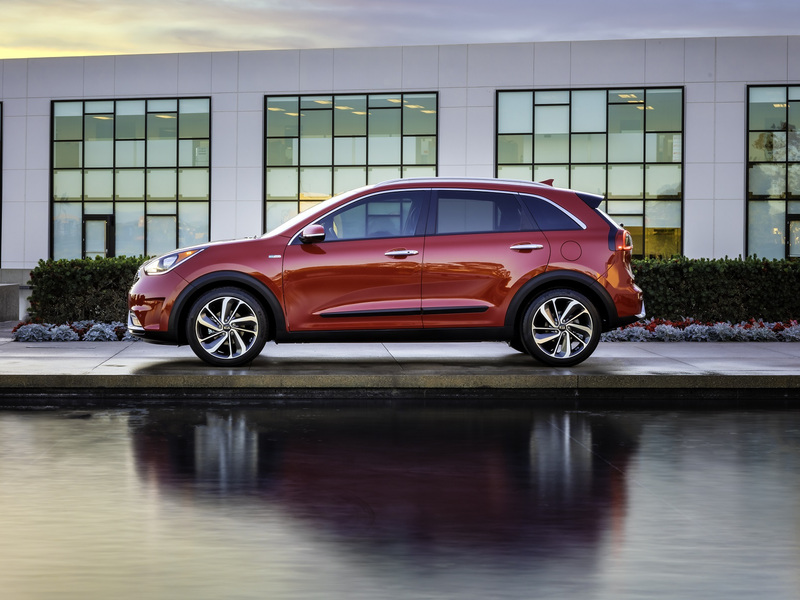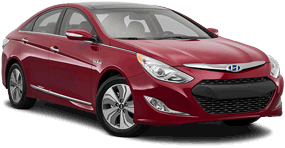Every automaker claims their vehicles are of the highest quality and better than their competition. They use things like automotive awards to bolster their claims and discuss new technologies and capabilities in their advertisements to woo you and get you to open your pocketbook. While some automakers are worth listening to, others try to bamboozle you with fancy marketing schemes.
Every year, brands move up or down in the quality and reliability rankings, and it can be hard to know which one is the best choice. While some brands stay relatively in the same spots, others rise and fall significantly. We wanted to take a closer look at the consumer data compiled by J.D. Power and Associates and Consumer Reports to try and determine which automaker has improved the most over the last decade. Here’s a close look at what we found.
How Quality is Determined
Quality is a trait that everyone wants in a new vehicle. When you’re paying a lot for a new car you want to know that it is made of good materials, will run for a long time, and generally not give you any trouble as you go through life. Actually defining what quality means is more difficult than it seems. Is it just reliability? Is it the nice materials inside the cabin? Is it the way the vehicle was designed? We see it as a mixture of all things.
J.D. Power and Associates, Consumer Reports, and other publications do their best to identify quality cars and showcase them in rankings. J.D. Power puts out an Initial Quality Study that judges new cars and a Vehicle Dependability Study that takes a look at vehicle’s reliability over time. Consumer Reports also does similar studies and evaluations. Neither company publishes all of their data collected. That said, from the information that’s readily available to the public, you can make some interesting conclusions, especially by looking at the data over an extended period of time.
We looked at the vehicle data from 2008 until now of the studies listed above to determine which automaker has made the biggest improvements. This information should be an indicator of what
Why Quality Trends Matter

It’s not easy to make a high-quality vehicle. If it was, there would probably be many more automakers than their currently are. Companies have to get a lot right in terms of design and styling while still adhering to the power and performance traits that customers want and the safety and emissions regulations of the government.
When an automaker gets it right, it can rise dramatically in the rankings. However, it can just as easily drop next year. The inverse of that is true, too. That means it’s important not to get stuck on any one model year as an indicator of how the automaker is doing over a longer period of time.
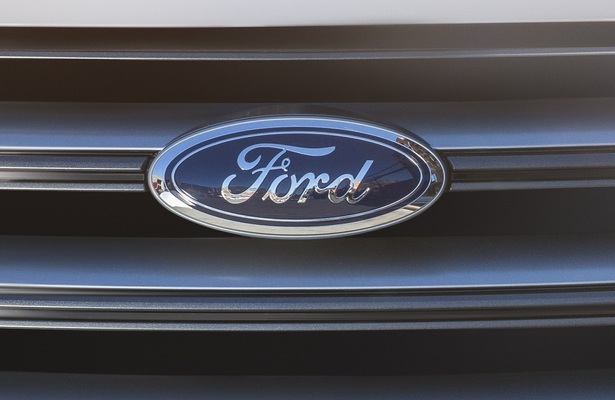
Take Ford as an example, the automaker dropped considerably in 2011. In 2010 it was ranked, eighth overall. The next year it dropped all the way to the well-below average 23rd position. A couple years later, the company was back up to above average rankings. If you look at the drop alone, it looks disastrous for the company. However, in
Upon some further digging, it became clear that Ford didn’t necessarily make bad vehicles in 2011. The automaker’s low score was due to some changes in design that customers didn’t like. Raffi Festekjian director of automotive product research for J.D. Power told Car and Driver that Ford tried to change too much too quickly with its designs, and its rankings suffered because of this.
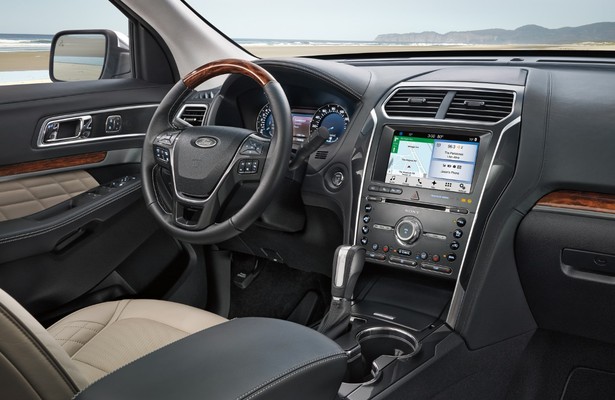
This example is just one demonstration of why it’s important to look at multiple years of data when determining the true quality of an automaker’s products. A single year can matter, but it’s not the whole picture. By looking at multiple years of data and identifying the trends, you’ll get a fuller picture of how an automaker is doing in terms of overall quality.
The Brand With the Biggest Improvement
While brands like Toyota, Lexus, Porsche, and Toyota usually rate near the top of the listings, it may surprise you to learn that Kia is actually the most improved automaker of the last decade for quality.
Kia’s Rise
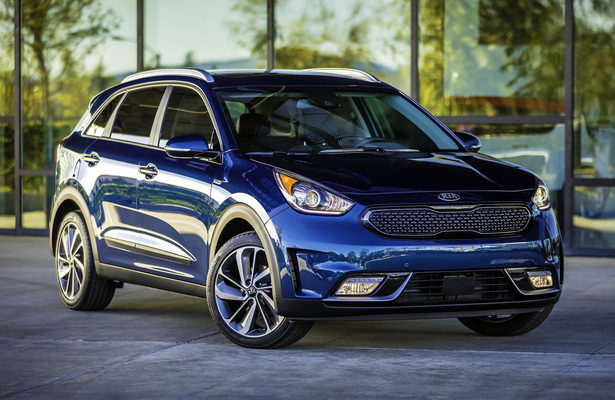
In 2008, the brand was ranked below the industry average in 18th place of the J.D. Power Initial Quality Study. Since then it has climbed to the number one spot for 2017. In fact, Kia has been at or near the top of the rankings for a while. In the last three years, it’s either been first or second in the Initial Quality Study rankings. The brand also ranks very well in the last several annual J.D. Power and Associates Vehicle Dependability Studies. It went from well below average ratings too much more respectable ratings in recent years.
Consumer Reports also noted Kia’s rise in quality over the last decade. The publication currently places the automaker at number six on its list of best automakers. It also lists Kia highly in terms of brand reliability, giving it a number 3 spot for 2018. Pair that with J.D. Power’s findings and it’s easy to see how far this brand has come in ten short years.
BMW’s Improvements

Another automaker that we have to mention for significant improvements in quality is BMW. Back in 2008, the brand placed 21st in J.D. Power’s Initial Quality Study. In 2017 it ranked sixth overall. The automaker also greatly improved reliability over the years, according to J.D. Power’s Vehicle Dependability Studies. That data in conjunction with Consumer Reports listing it as number three on its list of best automakers makes BMW a close second place in terms of the greatest quality improvement.
Brands That Have Always Been Good
While it’s important to note the brands that have risen to the top of the rankings, it’s also equally important to make note of brands that have more or less always been at the top. Porsche and Lexus come to mind first.
Porsche and Lexus Dominate
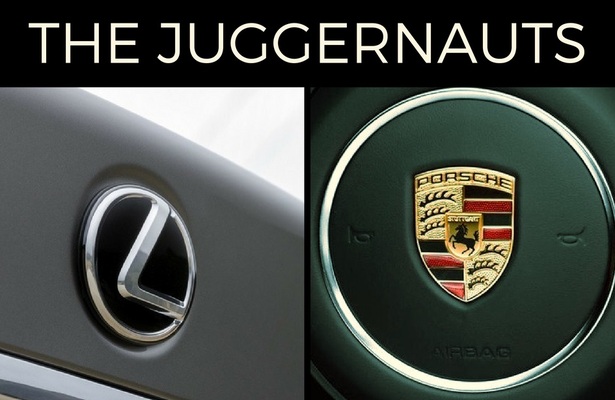
Both brands (images above: Lexus and Porsche) have placed very well in J.D. Power and Associates studies and Consumer Reports studies and evaluations over the last decade. In the last 10 consecutive J.D. Power Initial Quality Studies, both Lexus and Porsche have been in the top ten rankings, and most of the time they’ve been in the top five. The automakers are renowned for their dependability and longevity, and they have some of the highest customer satisfaction ratings in the industry.
Porsche has been known as a reliable automaker for much longer than a decade. The automaker claims that over 70 percent of all of the vehicles it has ever produced are still on the road today. That is a true testament to how good its vehicles really are. Of course, many of those cars are highly coveted sports cars, so they probably don’t see as many miles as most cars from other automakers. They're also likely better maintained over time. Still, Porsche has been around for a long time, and the high number of vehicles still on the road shouldn't be overlooked.
Lexus has been renowned for its reliability and high-quality basically since the brand’s debut in the late 1980s. Since its very first cars, the automaker has managed to keep high rankings, and this has led the brand to become one of the most well-respected in the world.
Don’t Forget Toyota, Honda, and Hyundai
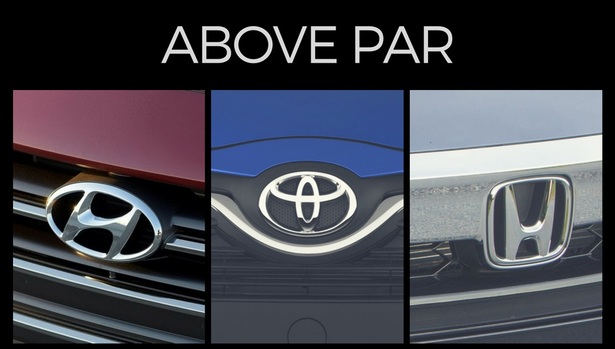
Toyota, Honda, and Hyundai are also noteworthy (images: Hyundai, Toyota, and Honda). Toyota more so than the others due to its superb reliability ratings. Both J.D. Power and Consumer Reports list Toyota as one of the most reliable brands of the last decade in their surveys and studies. Honda and Hyundai have above average initial quality rankings consistently, and they both have had very respectable reliability rankings, but aren’t quite as high nor as consistent as Toyota.
Honda has slid a little bit in the rankings recently, though it’s still above average. A couple decades ago, the company’s name was synonymous with quality and reliability. It’s still highly regarded today, but it isn’t ranked as highly by J.D. Power and Consumer Reports as it once was.
Hyundai made significant gains in the early 2000s, and it has kept up with respectable rankings over the last decade. It’s one of the better choices out there, and it’s consistent, above-average rankings
The Three-Pointed Star Shouldn’t be Left Out
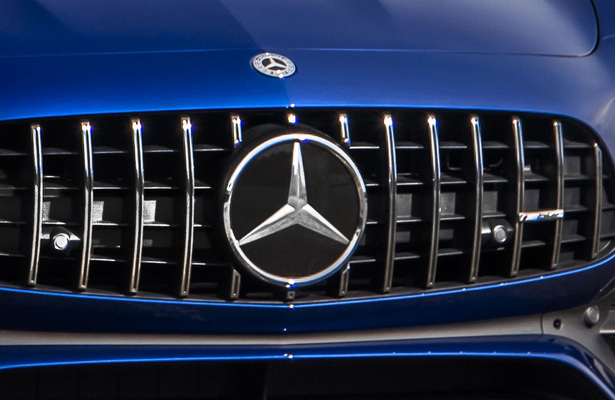
Mercedes-Benz (image above: Mercedes-Benz) has maintained above-average initial quality rankings for most of the last decade. It has made improvements in reliability over the last several years, too. Lexus ranks higher in many annual studies and BMW has improved more over the years, but if you’re after a premium badge, looking Mercedes’ way isn’t a bad move by any means.
There are other luxury automakers that currently rank higher than Mercedes, but if you look at the data over several years, the German company fares pretty well. That means it deserves a spot above some of the other competition like Cadillac and Lincoln.
High Quality for the Brand Doesn’t Always Extend to Every Model
Every year, there are studies that relate to the automakers as a whole. The studies cited above all discuss the automakers as a whole and do not address specific models. Specific models are evaluated in the data, but the rankings are for the brand as a whole. While this can be a helpful metric in your car-shopping quest, it can also be mildly misleading.
When you see a certain brand at the top of the rankings, many people assume it pertains to all of that company’s cars. It doesn’t. J.D. Power and Consumer Reports don’t publish all of their data compiled from their customers. On one hand, this is good because it keeps the data from overwhelming you, but on the other, it excludes you, the consumer, from seeing every bit of data that might help you make your car-buying decision.
J.D. Power keeps most of the information it collects behind the scenes so that it can charge companies access to it. The company charges automakers a hefty fee for access to its database. The automakers can then use that data to evaluate, in detail, how they’re doing in the industry and how they’re pleasing their customers. Regular consumers can’t get access to this data, and can’t afford to pay for it. J.D. Power reportedly charges hundreds of thousands of dollars to automakers for access.
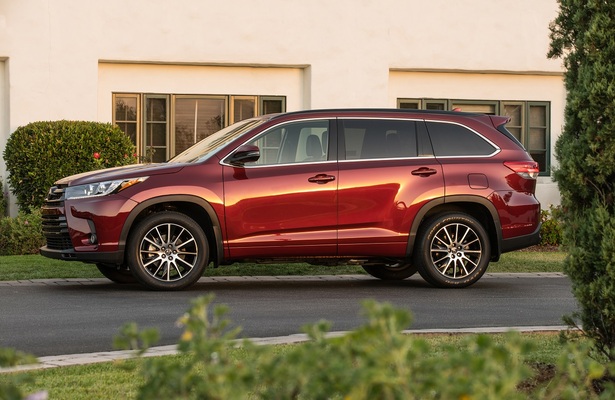
Consumer Reports, on the other hand, doesn’t necessarily charge for access to its findings. Some information is for subscriber's only, but subscribing isn't prohibitively expensive. The company collects data from its thousands of subscribers and uses that data, along with the opinions and findings of its editorial staff to pick the best cars of each automaker. This helps make it easy to discern which models are truly the best. When shopping for a new car, it’s important to not only look at the rankings discussed above, but also consider the rankings from Consumer Reports and other publications that discuss individual models.
Don’t just look for recommended models, look for the most reliable ones, too. The annual reliability study Consumer Reports puts out every year lists the least reliable model and the most reliable model for each automaker. For example, this year’s most reliable brand was Toyota, according to Consumer Reports. The least reliable model from Toyota was the Tacoma. The most reliable model was the 86. Just because the Tacoma was the company’s least reliable model, doesn’t mean you should immediately cross it off your list. It just means that you’re likely to have better luck when it comes to reliability if you buy an 86.
Consumer Reports also puts out information about the most reliable individual cars in each segment. The publication doesn’t list the brand’s reliability or quality ranking in these listings, it’s solely based on the specific model. If you really want to find the best car, it's smart to take a look at all the data pertaining to brands and individual models and make your selection based on all that information.
